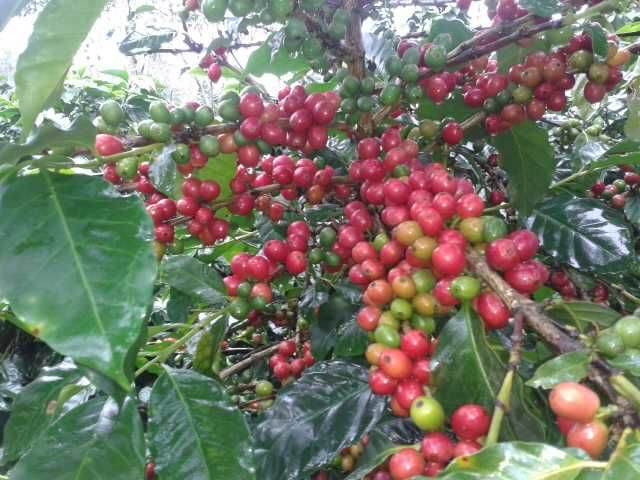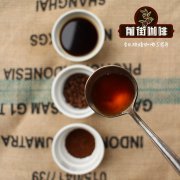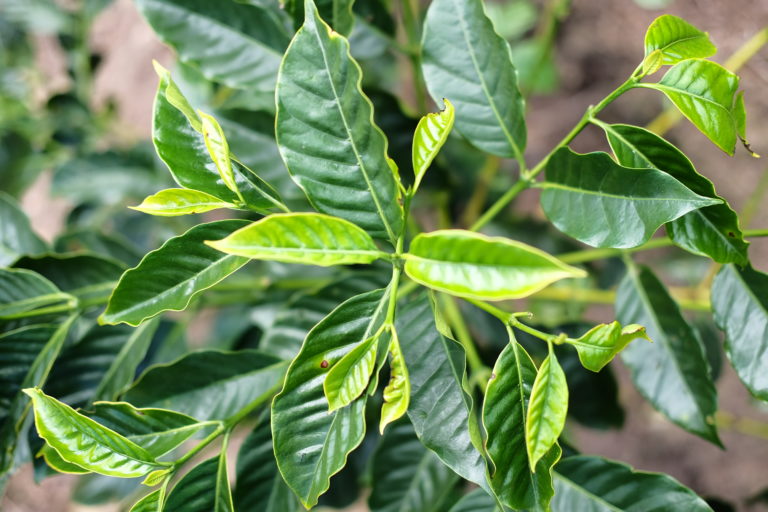What is the difference between individual coffee and fine coffee? Why drink boutique coffee?
Professional coffee knowledge exchange more coffee bean information please follow the coffee workshop (Wechat official account cafe_style)
Single cup of coffee
In the early days, coffee was mostly made into low-quality instant coffee bags or mixed with seasonings such as milk. The popularity of coffee specials has changed the supply and demand of the industry. in the early days, coffee was mostly named after the export port of origin, such as Santos in Brazil, Mocha in Yemen and so on. The coffee is transported by sea, arrives at the local roasting plant in the consuming country for roasting, and enters coffee shops, large and small. However, even coffee from the same export port will vary according to the level of production at the upstream end.

In the early 20th century, with the improvement of consumers' taste, the coffee industry began to attach importance to production resumes. From a wide range of producing countries and planting areas to more detailed coffee farms, cooperatives and fruit processing plants. A transparent production resume can avoid a mixture of good and bad coffee, which comes from a single producing area and the production process will not be mixed with coffee from other producing areas, known as "single coffee" (single origin coffee). The focus and significance of "single coffee" does not lie in whether the coffee comes from a single producing area, a single processing plant or a single variety or batch, but in the transparency and traceability of its production experience.
The proposal of individual coffee is a win-win situation for the industry, which greatly reduces the chances for consumers to buy coffee beans, encourages producers to grow better quality coffee beans, and gives baristas and bakers a clear understanding of the coffee they brew. However, individual coffee can only be screened by the classification of origin, and there is no real selection of coffee in terms of quality. Therefore, even if it is a single product of coffee, there will be good and bad quality because of different production conditions.
Boutique coffee
Therefore, individual coffee only shows that the product has a transparent production resume, still can not be used as a guarantee of high-quality coffee beans. In order to solve the problem that individual coffee can not solve, many coffee lovers began to promote fine coffee (speciality coffee). "Fine Coffee" inherits the basis of attaching importance to "production resume" of individual coffee, emphasizing that the coffee growing environment is like a red wine manor, and "local conditions" and "microclimate" have a great impact on quality. The definition of boutique coffee will change with the taste of the consumer market.
For example, boutique coffee was defined in 1978 as "coffee beans with unique flavors cultivated under special climatic and geographical conditions. In 2009, the American Fine Coffee Association redefined it: "A cup with a score of more than 80 is called boutique coffee. "with the turn of generations, new technologies and new ideas will always pour into the coffee industry, and coffee lovers will continue to find new answers for boutique coffee.
Common name information of boutique coffee
In the world of boutique coffee, special attention is paid to the variety, origin and treatment of coffee, because these will not only greatly affect the flavor of boutique coffee beans, but also affect how we should bake and brew these coffee beans. So coffee makers are used to putting the following message on their names:
Countries of origin: for example, Ethiopia, Brazil, Indonesia, etc., this must be written.
State / province / county / village of origin: this part depends on the situation, such as Humbera or Yegashifi, which will be written if any.
Boutique coffee bean manor: such as Hope Manor, Jade Manor. However, not every kind of coffee beans is produced by the manor, and sometimes it may be produced and sold by co-operatives and processing plants, so this question is not necessary.
The treatment methods of high-quality coffee beans: such as sun exposure, water washing, half-sun drying, wet planing, honey treatment, anaerobic treatment and so on. These treatments will change the sour, fragrant, bitter taste of coffee due to fermentation and chemical changes. Therefore, it is also very important and necessary information.
Varieties of boutique coffee beans: almost all boutique coffee is Arabica Arabica, while ordinary cheap coffee or instant coffee powder are mostly coffee from Robusta Robsta. But because Arabica is also divided into thousands of different varieties of coffee beans, and most of them have not yet been discovered and cultivated, it is not necessary to list specific varieties of coffee (for example, Ethiopian coffee beans are usually referred to as Ethiopian native species), unless they are particularly well-known varieties that require attention, such as bourbon, Ironka, Rosa, and so on.
Boutique coffee bean grades: for example, "Ethiopian Solar Aricha G1" in the G1 is Ethiopia's own classification of coffee beans, G1 means Grade 1, is the highest. The grading system varies from country to country, so it is not necessary to mark the information. Basically, fine coffee is almost all the most high-end coffee beans in the country.
Why do we drink boutique coffee?
In the past, people's impression of "coffee" was nothing more than "bitter", which came from the flavor impression caused by "deep roasting" in the second wave of coffee trend. with the changes of the times, coffee culture has evolved into the third wave of promoting "medium and shallow roasting", in which a new term "boutique coffee" has emerged. Boutique coffee is simply defined as "high-quality coffee with unique flavor in the producing area." In the past, the second wave of cultural "deep roasting" lost the flavor of the coffee producing area due to heavy coking, unable to clearly distinguish the coffee quality and understand the characteristics of the coffee producing area. Now the third wave of coffee trend is mainly medium-and light-roasted "boutique coffee". It reduces the coking flavor and highlights the flavor characteristics of the coffee origin, so that we can enjoy the real charm of coffee, which is why we should drink boutique coffee.
END
Important Notice :
前街咖啡 FrontStreet Coffee has moved to new addredd:
FrontStreet Coffee Address: 315,Donghua East Road,GuangZhou
Tel:020 38364473
- Prev

What are the growing conditions of organic coffee the difference between organic coffee and ordinary coffee
Professional coffee knowledge exchange more coffee bean information Please pay attention to the coffee workshop (Wechat official account cafe_style) so-called organic coffee is coffee that grows without the use of synthetic pesticides, herbicides or chemical fertilizers. These ways of growing coffee are conducive to maintaining a healthy environment and keeping the groundwater pure. After the coffee is harvested, it must be used.
- Next

Embarrassing certified organic coffee--must there be "certification" to be truly "organic"?
Professional coffee knowledge exchange More coffee bean information Please pay attention to coffee workshop (Weixin Official Accounts cafe_style) busy pace, people began to stress health and fun, and "organic" gradually became a good choice in modern people's daily life, organic food is gradually becoming a trend. Through this article, coffee drinkers will take you to understand the story behind organic coffee. Ho
Related
- Beginners will see the "Coffee pull flower" guide!
- What is the difference between ice blog purified milk and ordinary milk coffee?
- Why is the Philippines the largest producer of crops in Liberia?
- For coffee extraction, should the fine powder be retained?
- How does extracted espresso fill pressed powder? How much strength does it take to press the powder?
- How to make jasmine cold extract coffee? Is the jasmine + latte good?
- Will this little toy really make the coffee taste better? How does Lily Drip affect coffee extraction?
- Will the action of slapping the filter cup also affect coffee extraction?
- What's the difference between powder-to-water ratio and powder-to-liquid ratio?
- What is the Ethiopian local species? What does it have to do with Heirloom native species?

